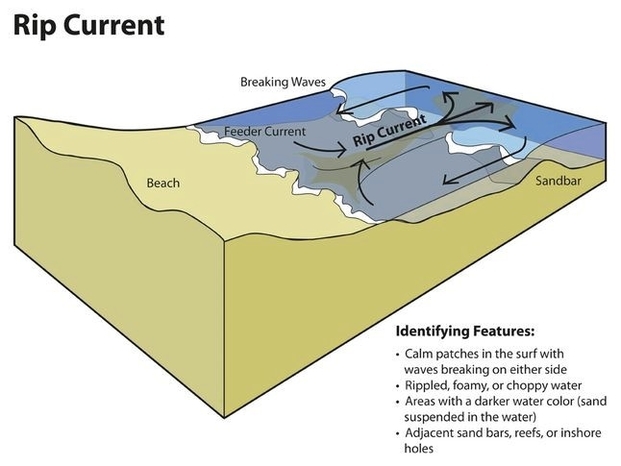
A rip current is a type of water current that can occur near beaches where waves break. It is a strong, narrow, and fast-moving flow of water that moves away from the shore, cutting through the lines of breaking waves. Rip currents can be dangerous for swimmers who do not know how to escape them, as they can cause panic, exhaustion, and drowning. Here is an essay of approximately 1000 words that explains what rip currents are, how they form, how to identify them, and how to survive them.
“`
Rip Currents: What They Are and How to Deal with Them
Have you ever been to the beach and noticed a patch of water that looks calmer than the rest, with fewer waves and foam? You might think that this is a safe place to swim, but you would be wrong. This is actually a sign of a rip current, a powerful and potentially deadly flow of water that can drag you away from the shore.
A rip current is a specific type of water current that can occur near beaches where waves break. A rip is a strong, localized, and narrow current of water that moves directly away from the shore by cutting through the lines of breaking waves, like a river flowing out to sea. The force of the current in a rip is strongest and fastest next to the surface of the water.
Rip currents can form by the coasts of oceans, seas, and large lakes, whenever there are waves of sufficient energy. Rip currents often occur on a gradually shelving shore, where breaking waves approach the shore parallel to it, or where underwater topography encourages outflow at one specific area. The location of rip currents can be difficult to predict. Some tend to recur always in the same places, but others can appear and disappear suddenly at various locations along the beach.
Rip currents are one of the most dangerous natural hazards in the world. They can move at speeds of up to eight feet per second, which is faster than an Olympic swimmer. They can also extend hundreds of feet offshore, beyond the breaking waves. Rip currents are responsible for tens of thousands of rescues by lifeguards every year, and for an estimated 100 deaths by drowning annually in the United States alone.
The main reason why rip currents are so hazardous is that many people do not know what they are, how to spot them, or how to escape them. Many people mistakenly call them rip tides or undertows, but these are different phenomena. A rip tide is a type of current associated with the movement of tidal water through inlets and est
